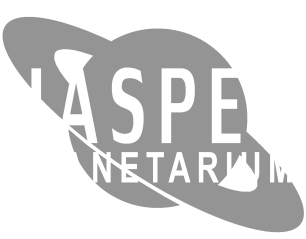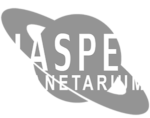MEET OUR ASTRONOMY GUIDES

 PETER McMAHON
PETER McMAHON
general manager / senior presenter
Peter is a multiple-award-winning science journalist who has worked for CTV News (where he currently served as a writer and later TV science commentator), Discovery Channel where he served as senior online producer and later lead producer, and written for MSN.ca, The Toronto Star, CAA, and Frommer’s Travel.
 He’s also written print science features/cover-stories for such magazines as Canadian Geographic, Reader’s Digest, Today’s Parent, Air Canada’s in-flight magazine enRoute, OWL Magazine, the U.S. magazine Sky & Telescope, and Sky News: The Canadian Magazine of Astronomy and Stargazing where he wrote the “Wilderness Astronomer” column each issue and served as a contributing editor.
He’s also written print science features/cover-stories for such magazines as Canadian Geographic, Reader’s Digest, Today’s Parent, Air Canada’s in-flight magazine enRoute, OWL Magazine, the U.S. magazine Sky & Telescope, and Sky News: The Canadian Magazine of Astronomy and Stargazing where he wrote the “Wilderness Astronomer” column each issue and served as a contributing editor.

Peter presenting at Jasper’s Whistlers Campground amphitheatre
An avid “Wilderness Astronomer”, Peter was the first to propose that Jasper National Park become a dark sky preserve, and worked with Parks Canada to have it designated the world’s largest astronomy park as of March 2011.
In February of 2010, he covered health science stories at the Vancouver Winter Games for CTVolympics.ca
 Peter has spoken on science communication and astronomy at countless universities, science centres, conferences, and national parks, as well as delivering science communication workshops at venues ranging from Science North/Laurentian University’s Science Communication program to The Banff Centre.
Peter has spoken on science communication and astronomy at countless universities, science centres, conferences, and national parks, as well as delivering science communication workshops at venues ranging from Science North/Laurentian University’s Science Communication program to The Banff Centre.

The Jasper Planetarium, at Fairmont Jasper Park Lodge
Peter is the author of several popular kids’ science books, including titles in Kids Can Press’ Machines of the Future science experiment book series Ultimate Trains (2010) and Space Tourism (Kids Can Press, 2011) which was an Official Selection for the prestigious U.S. Junior Library Guild.
His latest book – The Space Adventurer’s Guide (Kids Can Press, 2018) won the $10,000 Lane Anderson Prize for Canadian science writing in 2019, the 2019 Canadian Children’s Book Centre prize, and was nominated for the 2019 Forest of Reading Red Maple award (generally regarded as the top prize for children’s writing in Canada) as well as the 2020 Red Cedar Award and recently became a best-seller.

an aurora as seen from just outside The Jasper Planetarium
In addition to continuing work in science writing and communication, Peter’s current storytelling endeavours are focused on filming, writing, and producing world-exclusive interactive planetarium experiences unique to the Jasper Planetarium’s 50-seat dome theatre in the Canadian Rockies.
Under Peter’s leadership, The Jasper Planetarium won the 2019 ALTO Award for excellence in Alberta Tourism, presented by Edmonton International Airport, through Travel Alberta.
MORE: Read some of Peter’s science writing
 MATTHEW PARKER
MATTHEW PARKER
observing expert
Matthew has been avid amateur astronomer and astrophotographer here in Jasper National Park for more than a decade.
“I love all kinds of astronomy,” says Matt. “But my favourite are double and multiple stars.”
 An accomplished observational astronomer and expert on all manner of astronomy gear, Matthew is also a member of the Royal Astronomical Society of Canada, and The International Dark Sky Association.
An accomplished observational astronomer and expert on all manner of astronomy gear, Matthew is also a member of the Royal Astronomical Society of Canada, and The International Dark Sky Association.
When not scoping out the skies with customers in our dome or through telescopes all over Jasper, Matthew mixes a mean beverage at the Fairmont Jasper Park Lodge, where he serves as a senior bartender and unofficial staff welcome ambasador.
“I spend as many hours as I can under the dark skies out here,” he says.
“And I love to talk about my discoveries. Ask me anything!”
 KATE MATTHEWS
KATE MATTHEWS
associate astronomer
Born & raised in Ontario, Kate moved to British Columbia at 19 to discover her passion for all things outdoors. From snowboarding to downhill mountain biking, and even some bobsledding in between, Kate began her search outside for adrenaline of all forms.
It wasn’t until moving to Jasper that Kate’s interests in the great outdoors and beyond really kicked off.
 Kate has been at the planetarium since May 2016 and loves learning about the planets, stars and galaxies visible over Jasper Dark Sky Preserve.
Kate has been at the planetarium since May 2016 and loves learning about the planets, stars and galaxies visible over Jasper Dark Sky Preserve.
“Every day, I find out about something interesting to tell our visitors,” says Kate. “For example, 10,000 light years from Earth, a massive cloud contains enough ethyl alcohol to fill 400 trillion, trillion pints of beer.”
“As new stars heat up, ethyl alcohol can attach to specks of floating dust and as the dust moves toward the budding star, the alcohol heats, separates, and turns to gas.”
“The Sagittarius B2 dust cloud at the centre of our galaxy contains ethyl formate, which helps give raspberries their taste and reportedly smells like rum.”

